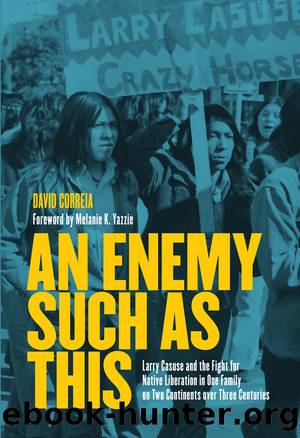An Enemy Such as This by David Correia

Author:David Correia
Language: eng
Format: epub
Publisher: Haymarket Books
Mine-Mill was among the most radical and militant labor unions in the United States. Its locals in southern New Mexico were notorious for wildcat strikes and work stoppages that shut down production at mines and mills throughout the region. By the time Louis joined, Mine-Mill represented tens of thousands of mine workers organized into hundreds of local unions throughout the United States. Even during the height of the anti-communist witch hunts of the McCarthy era, many of its leaders and organizers were unapologetic communists and as a result were constantly targeted by red-baiting legislators and transnational mining companies. The 1947 Taft-Hartley Act required that union organizers and leaders sign anti-communist affidavits as a condition of legal union recognition. âThe Taft-Hartley slave labor actâ as Local 890 organizer Clint Jencks called it.49 Nearly every union official from local affiliates of the American Federation of Labor and the Congress of Industrial Organizations signed the affidavits, but Mine-Mill leaders in Bayard and Santa Rita refused.50 The local National Labor Relations Board, four members of which were Kennecott board members, decertified Mine-Mill in 1948 because of it.51 Kennecott also retaliated, stonewalling the decertified Mine-Mill during 1948 contract negotiations. Two locals in nearby Hurley voted to strike in May in reprisal, but Kennecott still refused to negotiate. Communism constituted âa menace that presents a serious threat to our free way of life,â claimed Kennecott in July 1948. The companyâs managers refused to negotiate a new contract with Mine-Mill until it pledged to âstamp out Communistic control.â52 Kennecott, emboldened by the NLRB ruling, fired union members in 1951 for distributing what it called âcommunist literatureâ and for what it considered the unionâs âpro-Communist positions.â53 It docked the pay of one truck driver one hundred dollars a month when he joined the union after decertification.54 Even its own union federation opposed it. The Congress of Industrial Organizations expelled Mine-Mill in 1950.55
Mine-Mill union workers frequently walked off the job in wildcat strikes and organized work stoppages throughout the late 1940s and early 1950s, but most histories of Mine-Mill focus on only one action, Local 890âs dramatic 1951 strike against Empire Zinc in nearby Hanover, New Mexico. The 1954 film Salt of the Earth chronicled the strike. Rather than professional actors, the movie famously included mine workers and family members of mine workers among the cast. Jencks and Local 890 President Juan Chacon played themselves in the film. The filmâs writer, director, and producer all had been among the Hollywood Ten, a group of artists blacklisted from filmmaking when they refused to answer questions before the US Congress on their relationship to, or membership in, the Communist Party. The film, which has come to occupy an exalted place among many union and social justice activists, placed Chicano mine workers and the militant role of women at the center of its story of union struggle. Thereâs no shortage of books or articles about the film and Mine-Mill. Most focus on the role of women in the union or the film,
Download
This site does not store any files on its server. We only index and link to content provided by other sites. Please contact the content providers to delete copyright contents if any and email us, we'll remove relevant links or contents immediately.
Down the Drain by Julia Fox(539)
Minnie by Marianne van Velzen(351)
Love, Pamela by Pamela Anderson(319)
You're That Bitch by Bretman Rock(303)
The Foxfire Book of Appalachian Women by Kami Ahrens(296)
Simple Passion by Annie Ernaux(282)
Drinking Games by Sarah Levy(212)
Limitless by Mallory Weggemann(190)
Novelist as a Vocation by Haruki Murakami(189)
Memoirs of an Indian Woman by Shudha Mazumdar Geraldine Hancock Forbes(181)
Oh My Mother! by Connie Wang(159)
A Renaissance of Our Own by Rachel E. Cargle(157)
Brazen by Julia Haart(150)
Thinning Blood by Leah Myers(148)
My What If Year: A Memoir by Alisha Fernandez Miranda(143)
Jan Wong's China by Jan Wong(143)
Master Your Mind by John Willson(142)
I Give because I'm Blessed--I'm Blessed because I| Give by Moji Taiwo(134)
The House That Race Built by Wahneema Lubiano & Toni Morrison(133)
